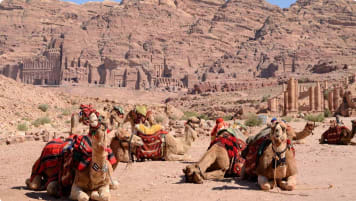The Legacy of the Safavids in Persia
Legacies of Persia’s Safavid Dynasty | Small group tours Iran Modern-day Iran is full of tiled architectural gems and of immense artistry, textiles and culture. But this is all thanks to its to the legacy…
8 Oct 19 · 8 mins read

Legacies of Persia’s Safavid Dynasty | Small group tours Iran
Modern-day Iran is full of tiled architectural gems and of immense artistry, textiles and culture. But this is all thanks to its to the legacy of its predecessors, the Safavids, who created the foundation for the beautiful country even before it was named Iran. For any mature traveller looking to take a walk through the vibrant mosques and markets, the influence of the Safavids will surround you. This article will briefly outline the history of the Safavid Empire from its creation in 1501 with Shah Ismail I to its collapse in 1722 under Shah Saltan Hussein.
If you’re interested in Iran, you might want to read some of our other articles:
- Questions About Iran
- Tehran Through Time
- History of Persian Carpets
- Beauty and Artistry in Iran: Persian Gardens and Mosaic Tiles
- Persepolis in Iran, a famous place on any escorted small group tour
- Travelling in Iran – the history and monuments of ancient Persia
- Thirty must see places when visiting Iran
You might also be interested in our suggested list of Ten Books to Read About Iran.
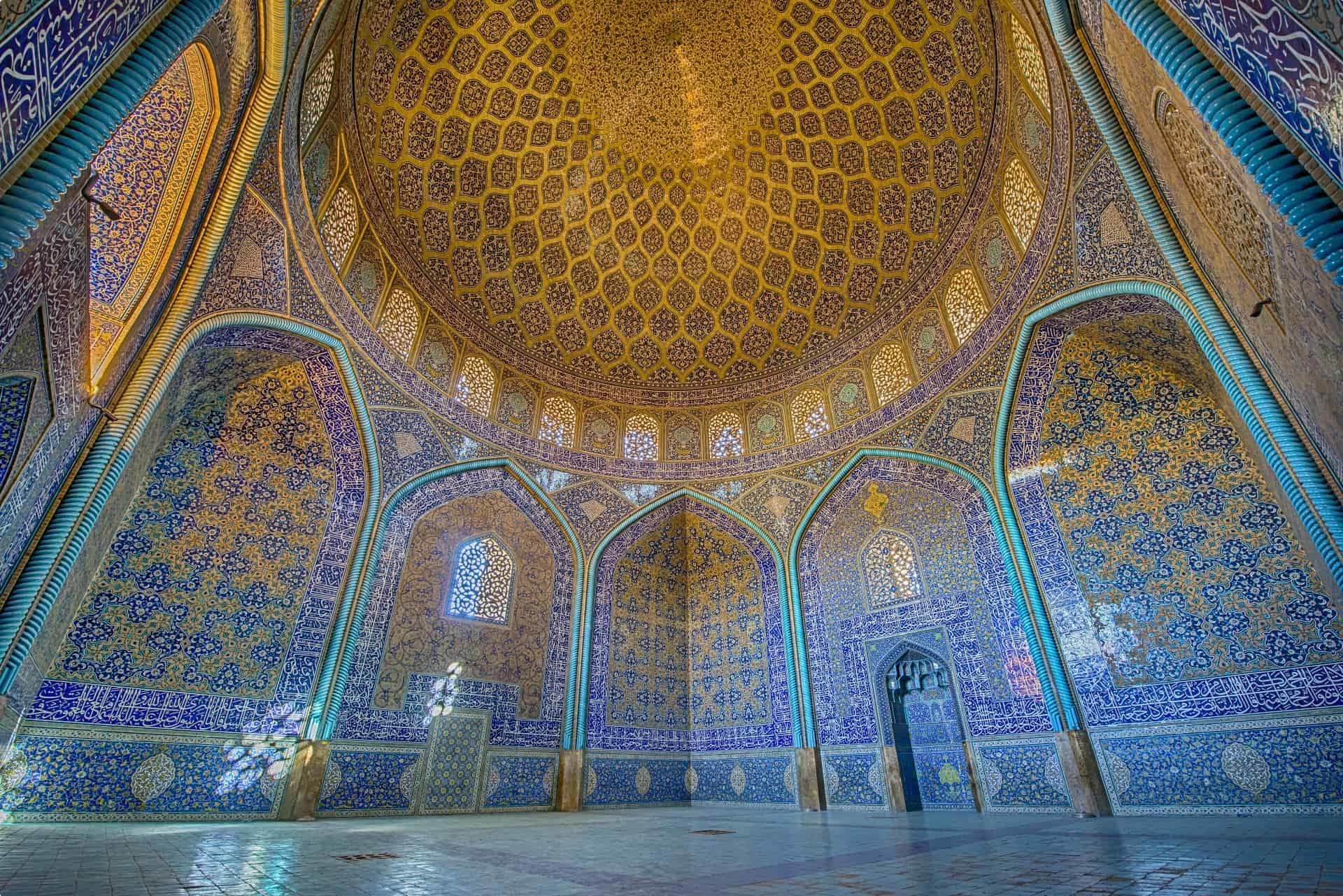
The legacy of the Safavid Empire, which lasted from 1501 to 1722, remains an integral part of modern Iran’s political history. Its foundation created key links between the Persian royal bloodline and Shi’ite Islam. Contained within the borders of contemporary Iran (more or less), the Safavid empire’s reach was secured through continual conflict with neighbouring Ottomans, Mughals, and Uzbeks, as well as through political and economic ties to royal families of Georgia, Armenia, and Circassia. Despite ongoing political strife over the leadership of the Empire, the rulers and people of Safavid established three highly effective capital cities replete with architecture, art, and sophisticated culture.
The Founding of the Safavid Empire
The Safavid Empire was established in an Iran that had been long fragmented. The Middle Ages had seen a series of invasions of Iran by Turks, Mongols, and others. In 1402, Iran had come under the power of the notoriously ruthless Timur (Tamerlane), a descendant of Genghis Khan. Timur divided eastern Iran between his sons, leading to continued conflict, while western Iran was dominated by the “Black Sheep” Turkmen.
From 1453 to 1478, Iran was re-united under the rule of Uzun Ḥasan. This would prove to be short-lived as his son, Yaʿqūb, alienated the rich and powerful by using Sunni doctrine to undo taxes that had been implemented under Mongol rule.
Yaʿqūb’s mistakes set the scene for the emergence of Shi’ite Islam in Iran. A form of Shi’ite Sufism had been spreading in Iran thanks to the influence of Sheikh Haydar. Haydar was the descendant of Ṣafī al-Dīn, a mystic who established the Safavid Sufi Order. Sufism refers to a spiritual, inwardly-looking tendency within Islam. Sufi mystics are generally organised into brotherhoods or orders, each with its own rites, leadership, and spiritual genealogy. Though Ṣafī al-Dīn had been a Sunni, at some point the Safavid order became associated with Shi’ism. By Haydar’s time, the Safavid order had a broad base of support, and Haydar could marshal his followers into warfare against Christian enclaves in the Caucasus mountains.
While Haydar died on his Caucasian expedition, his son Ismail continued his legacy. While Haydar was not of royal blood he had married the daughter of Uzun Ḥasan, meaning that Ismail was royal, and therefore could make a claim for Shah. Ismail was helped by the support of the Qizilbash, Turkmen tribes converted to the emotionally powerful Shi’ite-Sufi mysticism. At the age of fourteen, using the army built up by Haydar, Ismail took Tabriz from the White Sheep and declared himself Shah. Over the subsequent ten years, Ismail conquered Iran in its entirety, establishing the Safavid dynasty. While the majority of the population was Sunni, Ismail imposed Shi’ism on the populace. In order to cement his authority, he claimed (falsely) to be a descendant of the Shi’ite imams, as well as using his royal lineage.


While it was traditional for a new dynasty or king to construct a mosque in honour of their claim to power, Shah Ismail I preferred to divert resources to expanding and protecting his territory over renewing the facade of the overtaken capital. As a result, there is very little architecture remaining from the early Safavid dynasty, even around their home territory of Tabriz. One exception to this was his expansion of the existing shrine of Sheikh Safi in Ardabil to enlarge the convent and burial sites of his Safavid ancestors.

However, Ismail was keenly interested in other forms of art. He encouraged a wide variety of art forms, including carpets, cutlery and dishware, and books and poetry. He attempted to unify all of the people under his rule by educating them on Persian art and literature and making use of their talents. Most importantly, Shah Ismail I commissioned a revival of Firdausi’s Shahnama, a mixed fiction and non-fiction poem about conflict between Iranians and kings, which since become synonymous with a manual for Muslim behavioural ideals.

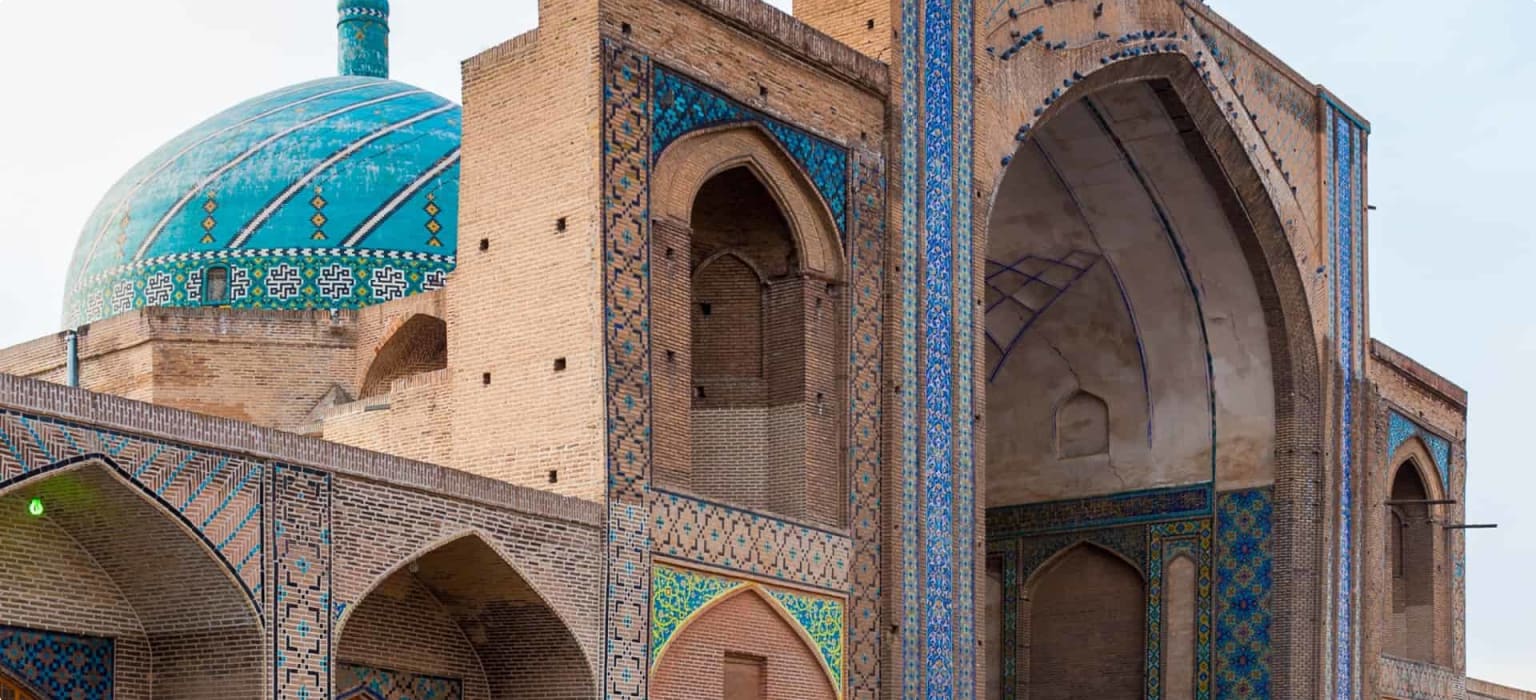
The next ruler of Safavid, Shah Tahmasb
The decline of Shah Ismail I’s rule began after his army was defeated at the battle of Chaldiran against the Ottoman. Flushed with embarrassment at the loss of Tabriz, the Shah began pulling himself away from military rule and withdraw from the public eye. He refocused his attention on changing administration of the territories and adjusting the imbalance of power between the Qizilbash governors and the nobility by reducing some of the rights of the Qizilbash. Though these changes were considered minor reforms at the time, they paved the way for civil war after his death in 1524. Each heir to the throne had been educated by a different Qizilbash governor, a situation that would cause trouble, as after Ismail’s death each governor put the child they educated forward as heir to the throne as a ploy to enhance their own status. Civil war ensued and lasted a decade before Tahmasb Mirza, Shah Ismail I’s eldest son, ascended the throne. The new Shah Tahmasb exacerbated tensions by reappointing the nobility to the highest military and administrative positions and further centralising power in the new capital of Qazvin.

Qazvin became the new site of the Safavid capital following several struggles to maintain power over Tabriz, due to its being so close to the border with the Ottoman Empire. Unlike Tabriz, Qazvin underwent extensive urban planning to distinguish the city as an important Safavid location. Its architecture and culture reflected its significance to the empire. Shah Tahmasb constructed a royal neighbourhood and aristocratic houses. However, while architecture and manuscripts increased under Shah, other arts diminished slightly as Shah Tahmasb “renounced worldly pleasures,” (Babaie 2010) of which dance, music, and paintings were included.

The legacy of his urban vision continued until his death in 1576 and is still visible today in the royal precinct.
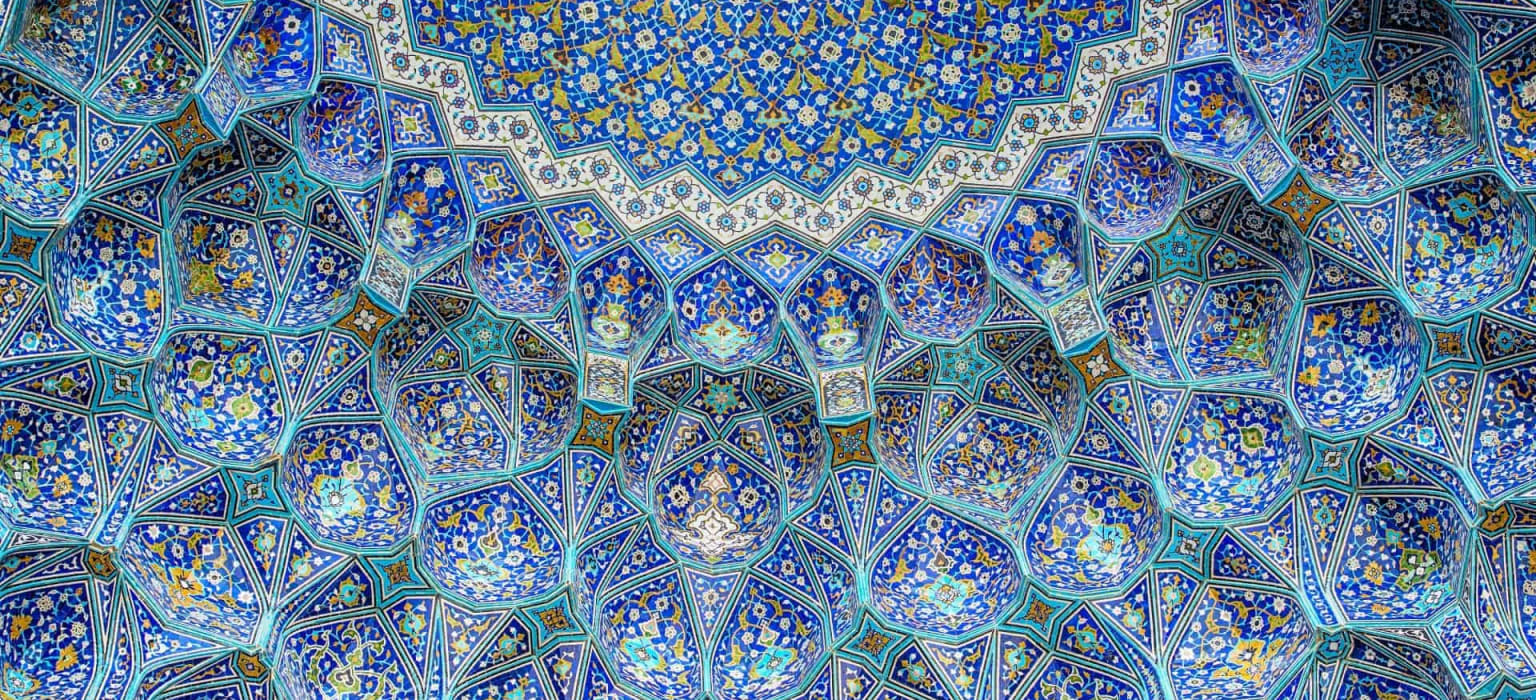
Shah Abbas I’s time
The years following Shah Tahmasb’s death in 1576 saw constant turmoil in the form of political elite and royal family members competing for succession to Safavid rule. Upon a brief adoption of the Shah title, Ismail II ordered most of the rest of the heirs to the throne be killed so his control could not be challenged, but he too was ousted and killed just over one year into his kingship. The reign of the Empire then fell to Mohammad Khodabande. Mohammad was visually impaired, meaning that he had been initially ineligible for the throne, sparing him from the blood-lust of his half-brother Ismail II.
With eyes turned to one another for the kingship of the Empire, less attention was given to the invading neighbours, namely the Ottomans, who constantly sought the opportunity to overtake the border between their kingdoms. They managed to reclaim Tabriz while the royal conflict took place. After securing the throne, Shah Mohammad Khodabande shifted his attention back to the external threats, only to have his son Abbas I move in for the throne. Then, much like Shah Ismail II, Shah Abbas I had all of his male relatives executed or blinded to exclude them from eligibility to the kingship.
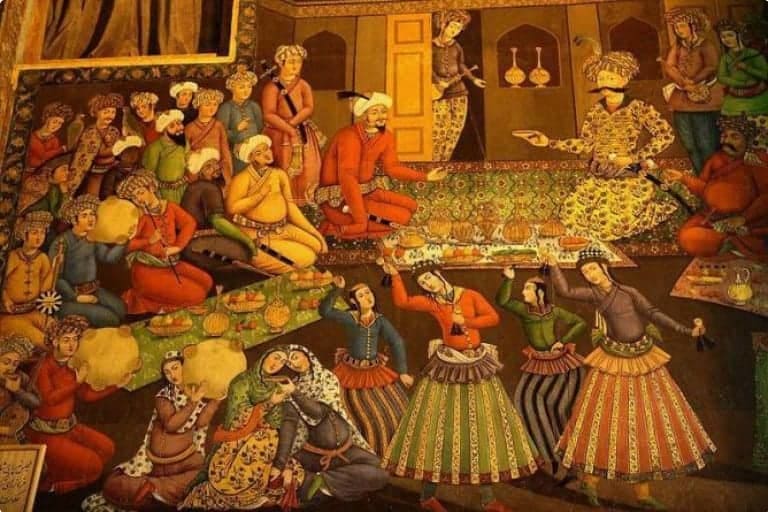
Once again, the capital was moved to better align with the new Shah’s administrative and cultural vision. Isfahan was dubbed the capital of the Safavid Empire in 1598, and Abbas I was the first Shah to commission a congressional mosque, the Sheikh Lotf-Allah Mosque (completed 1619), as well as other prominent buildings to highlight his time as king, including Ali Qapu Palace (1615), and the Royal Mosque (1638), all of which enclose the Maydan-e Naqsh-e Jahan square in the centre of the city. The Shah brought in more wealth to the royal domain by retaking ownership of the lands that the Qizilbash had been overseeing since the foundation of the Safavid Empire, and by also increasing trade relationships with Europe, especially England, with new trade routes through Norway, the Volga river and the Caspian Sea, which successfully avoided contested borders with the Ottomans and Portuguese (in Hormuz). After reforming the political structure so that he held absolute power, Shah Abbas I was revered for his ability to lift the Safavids from the chaos that arose following his grandfather’s death, creating peace with the Ottomans and increasing prosperity through trade.

Cultural ties
The Safavid empire was very closely linked to the Mughal Empire in India. The Mughal Empire was vastly wealthy and demonstrated immense artistry in the textiles, paintings and other commodities for trade. A number of the artists in their employ were migrants from the Safavid Empire, leading to cultural exchange between the two empires.

Although the Safavids had a seemingly unified society under Shah Abbas I, the Empire became increasingly fragmented following his death in 1629. His successors all followed the same political structure of absolute power that Shah Abbas I did, but more expansive networks of relationships somewhat reduced their responsibilities and thus their control. His successors did not manage to keep the Empire protected from invading armies and Isfahan was lost to Afghan soldiers in 1722. Without a strong leader with military capability and gumption, Isfahan was never reclaimed, essentially bringing an end to the Safavid empire.

A Legacy Never Lost
The Safavids’ history is bound to modern day Iran, through its architecture and art, political institutions and ideology. The Empire was always evolving, reacting to the strengths and weaknesses of rivals and allies in order to best maintain control of its land and people. For example, the once essential responsibility of the Qizilbash to manage the territories were retracted following concerns over loyalties and instability of a decentralised system. Moreover, the Safavid dynasty established the centrality of Shi’ism to the Iranian polity, a centrality reaffirmed by the 1979 Iranian Revolution.
The Safavids also left an important architectural and artistic legacy, which can still be viewed today. The beautiful tiles and textiles at local bazaars and mosques owe their origins to craft traditions established under Safavid shahs as much as the architectural masterpieces discussed above.
Visit Iran with Odyssey Traveller
Odyssey Traveller offers two fully escorted trips to Iran each year, one in spring and one in autumn. We begin our tour in bustling Tehran, where we take in colourful traditional art and handicrafts at a number of museums. We then head to several of Iran’s ancient cities, Zanjan, Takab, and Hamadan, each home to important UNESCO World Heritage Sights. Our trip also visits Esfahan, regarded in the Middle Ages as ‘half the world’, and still Iran’s most beautiful city. We also head to the stunning desert city of Yazd, and Shiraz, famous as the ‘city of poets’, from which we make a day trip to Persepolis, capital of Darius the Great.
Our trip to Iran is designed for mature and senior travellers, either couples or those making their journey as a solo traveller. Our groups are always led by an experienced tour operator and local guides, who share the culture and history of Iran with you. We understand that the local cuisine is a vital part of culture, and make sure to include meals at authentic local restaurants.
For your Iran holiday, think about joining an Odyssey tour. We promise a memorable experience of this fascinating country. To see the full itinerary for our forthcoming tours click here, and please call or send an email if you have further enquiries.
Related Tours
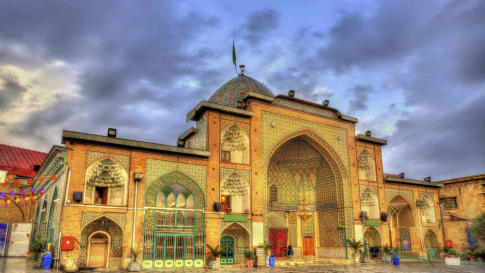
17 days
Sep, Nov, AprIran Culture and History Escorted Small Group Tour for seniors
Visiting Iran
Unlike its neighbours to the west and northwest, Iran had not adopted Christianity and it was the explosive spread of Islam and its ready adoption, without the Arabic language or customs, which helped unite the culture and greatly enrich Persian heritage. This small group tour program includes the great cities of Iran, historic sites, mosques, gardens, bazaars and teahouses for couples and solo travellers.
From A$11,825 AUD
View Tour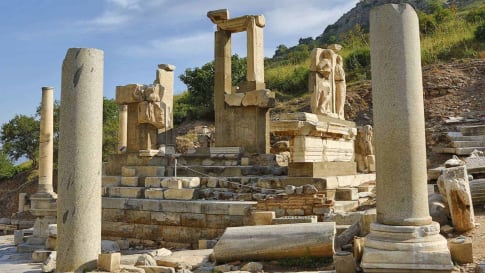
21 days
Apr, AugSmall group tour of Ancient Turkey
Visiting Turkey
As a travel company we seek to keep guests off the beaten path. Trips that are remembered for authentic experiences. Our small group journeys in Turkey are fully escorted by an experienced local guide and an Odyssey guide to give this type of experience whether at one of the many UNESCO World heritage sites explored or local bazaars. It is always about the adventure and memories that we will create.
From A$17,295 AUD
View Tour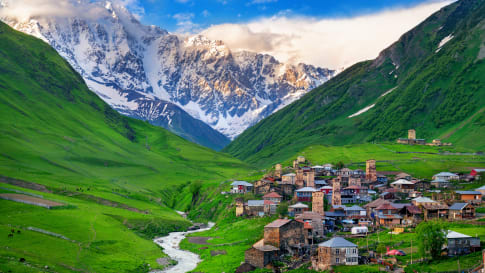
22 days
May, OctSmall Group Tour to the Caucasus | Armenia Azerbaijan Georgia
Visiting Armenia, Azerbaijan
This small group program is designed to give people an opportunity to explore Tbilisi, Baku, Yerevan as well as important monuments, historical and religious sites, diverse landscapes and ancient architecture by visiting the Caucasus Mountains and the lowlands of Armenia, Georgia and Azerbaijan. Led by local English speaking guides, there will be the opportunity to meet local people.
From A$11,835 AUD
View Tour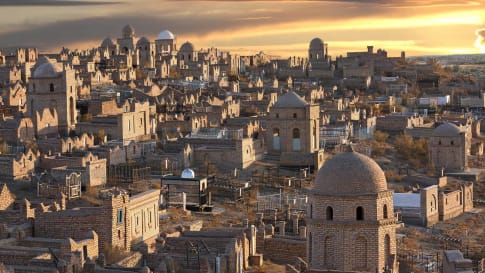
27 days
May, AugThe Stans Small Group Tour: Uzbekistan, Kazakhstan, Kyrgyzstan, and Turkmenistan
Visiting Kazakhstan, Kyrgyzstan
This Odyssey is designed for the adventurous traveller, a couple or solo traveller on a small group tour who is prepared for a range of accommodation styles, for walking excursions and some long travel days in 3 Central Asian countries. The program combines experiences with great scenery, ancient and modern histories, family visits and lifestyles that differ dramatically.
From A$16,750 AUD
View Tour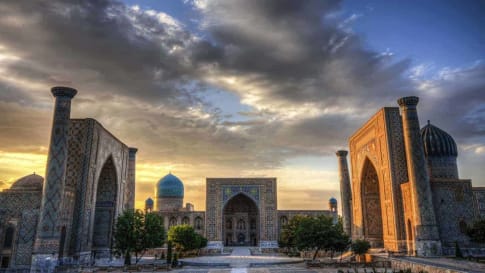
29 days
Aug, May, SepTravel on the Silk Road with Odyssey Traveller | Small Group Tour for Seniors
Visiting China, Kyrgyzstan
The Silk Road is an ancient trade route linking China and Imperial Rome through Central Asia. Few areas in the world remain as unexplored or offer such richness in terms of ancient and modern history, culture, and scenic diversity as Central Asia. Our Small group Silk road tours itinerary explores the Road through remote deserts and mountainous environments as we visit key sites between Xi'an and Bukhara.
From A$18,750 AUD
View Tour
